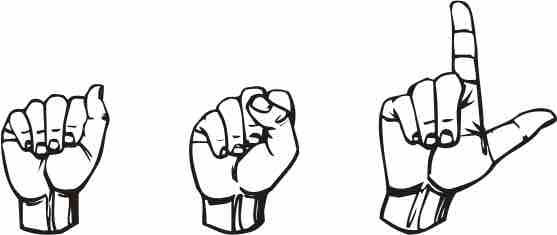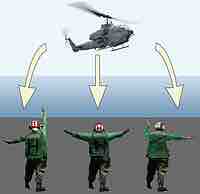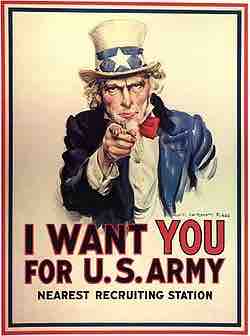A gesture is a form of non-verbal communication in which visible bodily actions communicate particular messages, either in place of speech or together and in parallel with spoken words. Gestures include movement of the hands, face, or other parts of the body. Gestures differ from physical non-verbal communication that does not communicate specific messages, such as purely expressive displays, proxemics, or displays of joint attention. Gestures allow individuals to communicate a variety of feelings and thoughts, from contempt and hostility to approval and affection, often together with body language in addition to spoken words.
The most familiar categories of gestures are the so-called emblems or quotable gestures. These are conventional, culture-specific gestures that can be used as replacement for words, such as the handwave used in the U.S. for "hello" and "goodbye. " Another broad category of gestures comprises those gestures used spontaneously when we speak. These gestures are closely coordinated with speech. Gestural languages such as American Sign Language and its regional siblings operate as complete natural languages that are gestural .

Gestural Language
American Sign Language, or ASL, is a gestural language. This is how to sign the letters A-S-L.
Many animals, including humans, use gestures to initiate a mating ritual. This may include elaborate dances and other movements. Gestures play a major role in many aspects of human life. Gesturing is probably universal; there have been no reports of communities that do not gesture. Gestures are a crucial part of everyday conversation such as chatting, describing a route, or negotiating prices on a market; they are ubiquitous. Gestures have been documented in the arts such as in Greek vase paintings, Indian Miniatures, and European paintings.

Hand Gestures
Military air marshallers use hand and body gestures to direct flight operations aboard aircraft carriers.

Pointing
Pointing at another person with an extended finger is considered rude in many cultures.